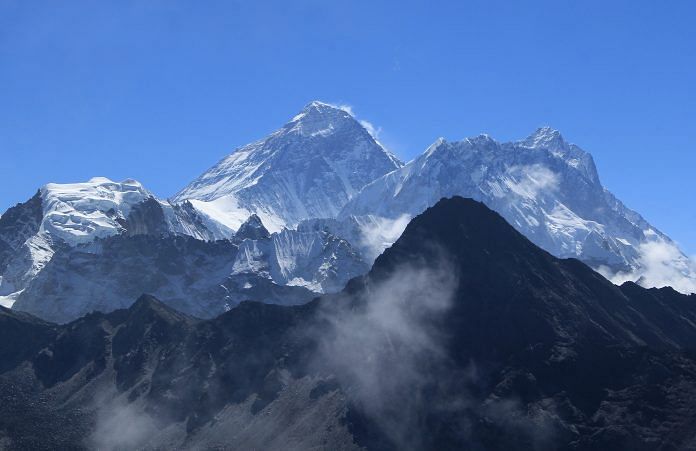At the Hotel Yak & Yeti in Kathmandu, there’s a chandelier made of green glass bottles. Not so long ago, they were in what’s been dubbed the ‘world’s highest dumpster’ – on the slopes of Mount Everest.
Since 2013, Moware Design has been promoting the circular economy in the Himalayas – while also helping to employ local women from low-income families – by upcycling waste into useful products.
Earlier this year, the world’s highest spring clean operation in Everest turned up 10 tonnes of trash – including discarded breathing canisters, climbing equipment, plastic and human waste – after a six week operation.
Moware has been able to repurpose some of that load. And its products, including drinking glasses and light fittings made from once-discarded scrap, are now proudly hanging in hotels, restaurants and homes around Kathmandu.
“Waste is a taboo in our society, considered as dirt,” Ujen Wangmo Lepcha of Moware told AFP. “When they see these kind of products they are like ‘wow’, these things can be made and it is possible.”
A mounting problem
When Edmund Hillary and Tenzing Norgay first scaled Everest in 1953, they were treading where no human had ever successfully trod before. Since then, the route to the roof of the world has become well traversed, with hundreds of people each year attempting to follow in their footsteps. But they have gradually turned Everest into a towering trash heap.

The Nepalese government has been trying to fight back against the damage caused by decades of mountaineers drawn to its slopes.
In June, a 14-strong “cleaning team” collected sacks of trash which was then flown or driven to recycling centres in Kathmandu.
Besides the upcycling initiatives, a new waste facility – called Sagarmatha Next, after the Nepali name for Everest – is also being built on the route to the base camp. As well as processing the garbage, it will work on projects with local artists to help give new life to the trash.
And the government has recently banned single use plastics from the region.
It’s not going to get easier
The problem is, the clean-up operation is only going to get harder. As tricky as it is to clear trash from the mountain’s lower reaches, they are easy pickings compared to the tonnes of waste that remains higher up. It’s estimated there about 30 tonnes of trash left on the mountain.

Every year, more and more climbers attempt the mountain – each paying around $30,000 to do so.
Added to this, global warming means glaciers and long-standing snow and ice on the mountain are rapidly receding. This is exposing more bodies and waste, as well as making climbs more risky and difficult.
Around the world, we are generating increasing volumes of waste each year. The World Bank estimates that by 2050 we will be throwing out 3.4 billion tonnes of trash a year. These growing waste mountains contribute to greenhouse gases, releasing methane as they decompose, as well as providing a breeding ground for disease vectors.
Also read: World’s oceans may seem unimportant, but letting it die isn’t an option
This article was originally published in The World Economic Forum.



